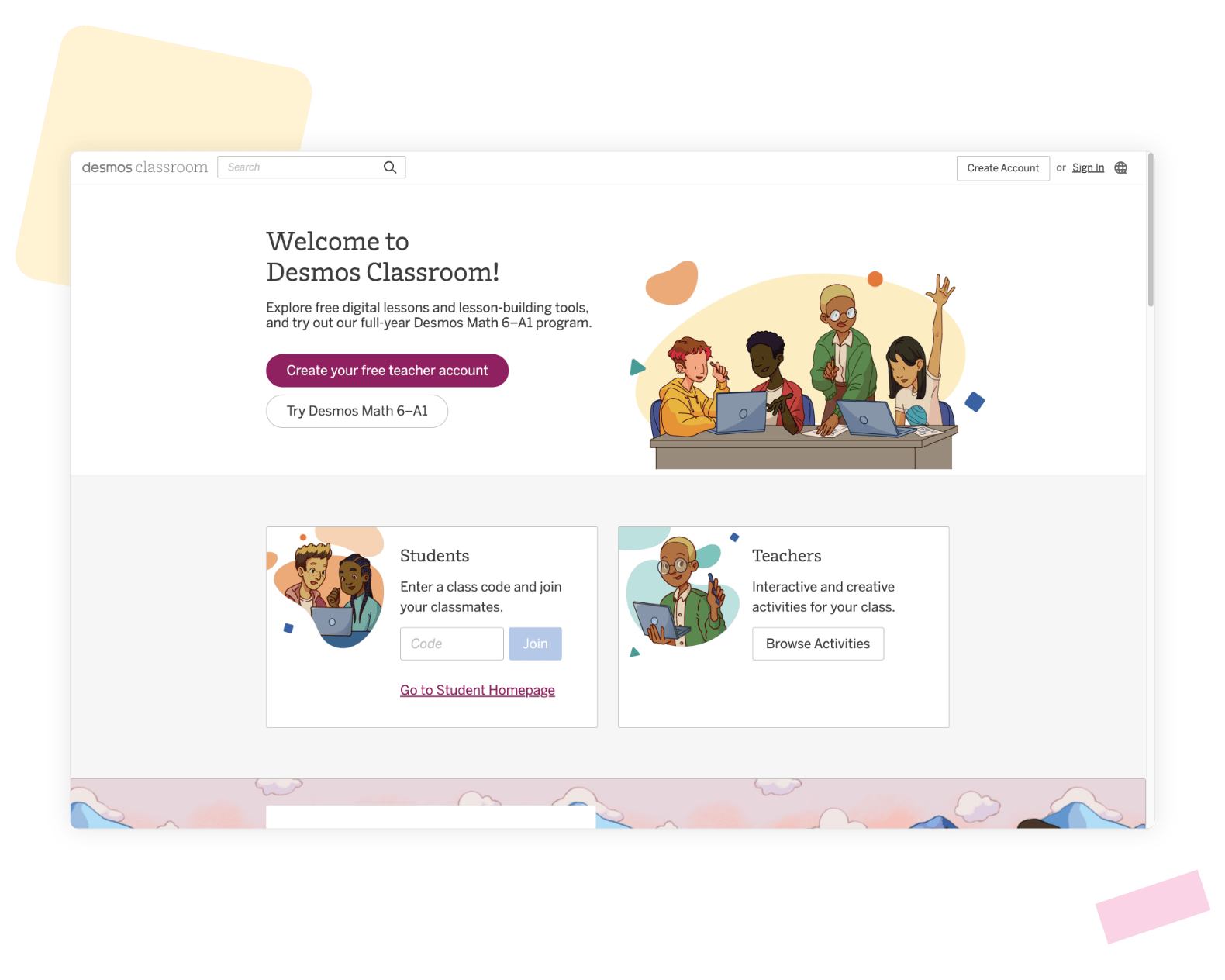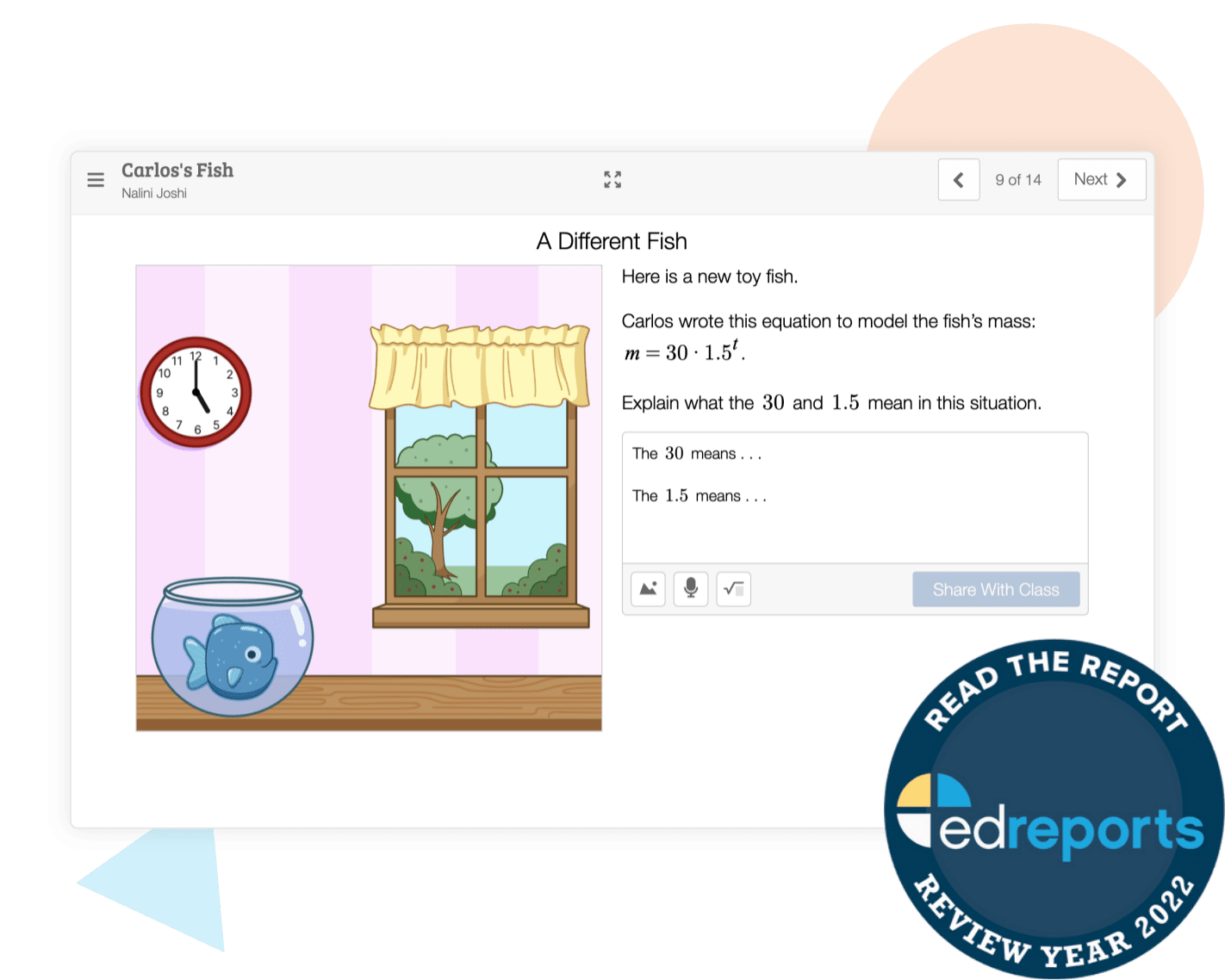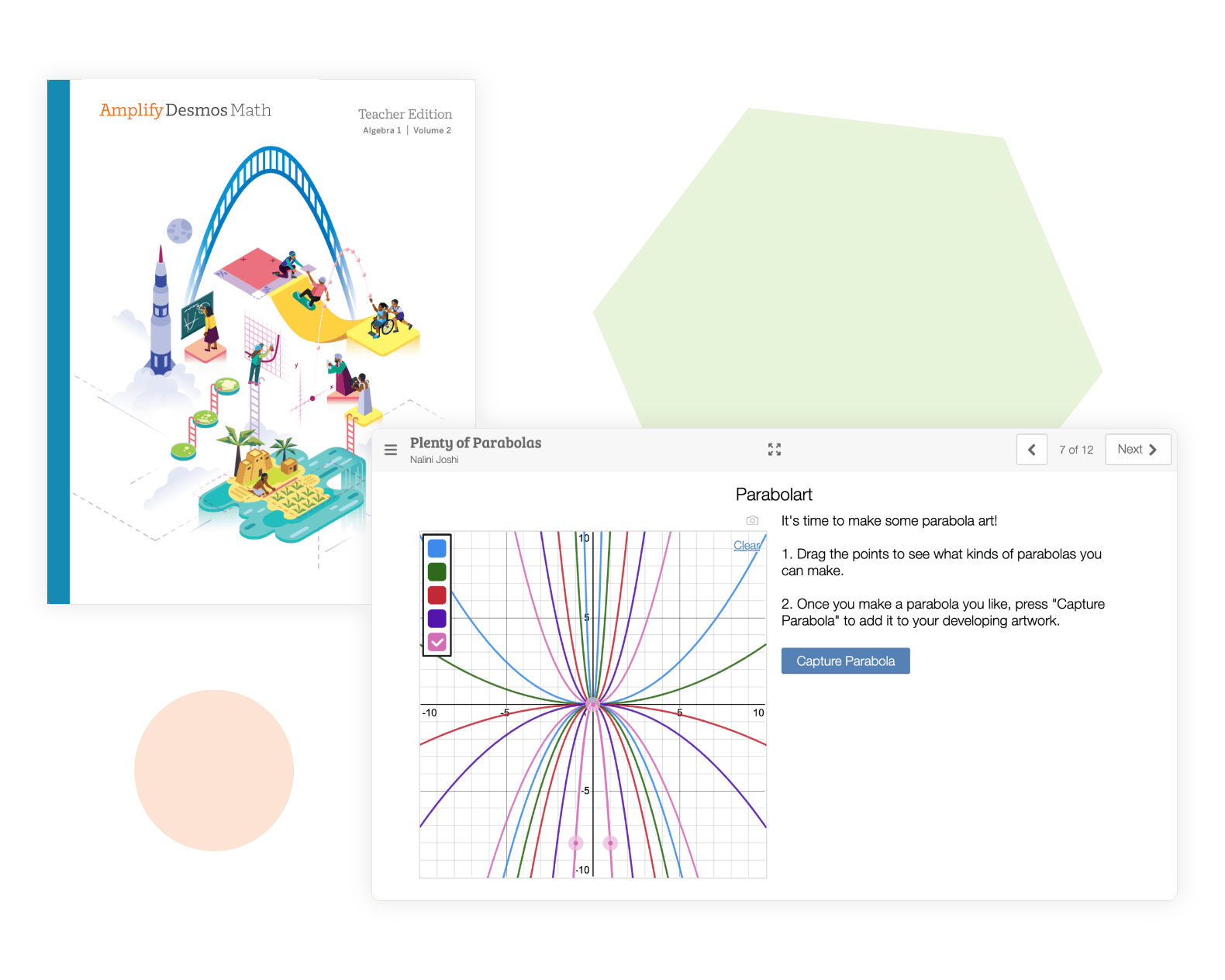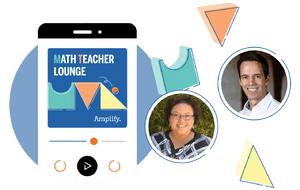Develop and celebrate student thinking by tapping into your students’ natural curiosity.
Amplify Desmos Math helps teachers cultivate a classroom of eager, collaborative learners by starting with student ideas and building to robust grade-level learning for every student every day. Para la versión en español, haga clic aquí.
Desmos Classroom
Grades K–12
Free
A teaching and learning platform offering a collection of free digital lessons and lesson building tools.
- Teachers can build their own lessons using the Activity Builder tool.
- Teachers can explore lessons including:
- Library of user created lessons.
- Featured Collection lessons authored by the Desmos Classroom team.
Learn more at teacher.desmos.com.
Desmos Math 6–A1
Grades 6–8, Algebra 1
Paid
A year-long, blended middle school math curriculum delivered through the Desmos Classroom platform.
- A rigorous curriculum based on Illustrative Mathematics® IM K–12™, authored by the Desmos Classroom team.
- Grades 6–8 courses rated perfect scores on EdReports (Algebra 1 has not yet been reviewed).
Read the review on EdReports.
- Pre-made, fully customizable lessons, available in English and Spanish.
- Powerful facilitation tools to allow for real-time insight and feedback.
Learn more amplify.com/desmosmath.
Amplify Desmos Math
Grades K–Algebra 2
Paid
Coming Soon: A new core PreK–12 program from Amplify and Desmos Classroom.
- A problem-based approach that gets results by developing deep conceptual understanding, procedural fluency, and application.
- Technology that connects the classroom, fostering collaboration, discourse, and perseverance in problem solving.
- Students’ natural curiosity leads to deep understanding and math learning that lasts a lifetime.
- Available in English and Spanish.
- K–A1 pilots available back-to-school 2024.
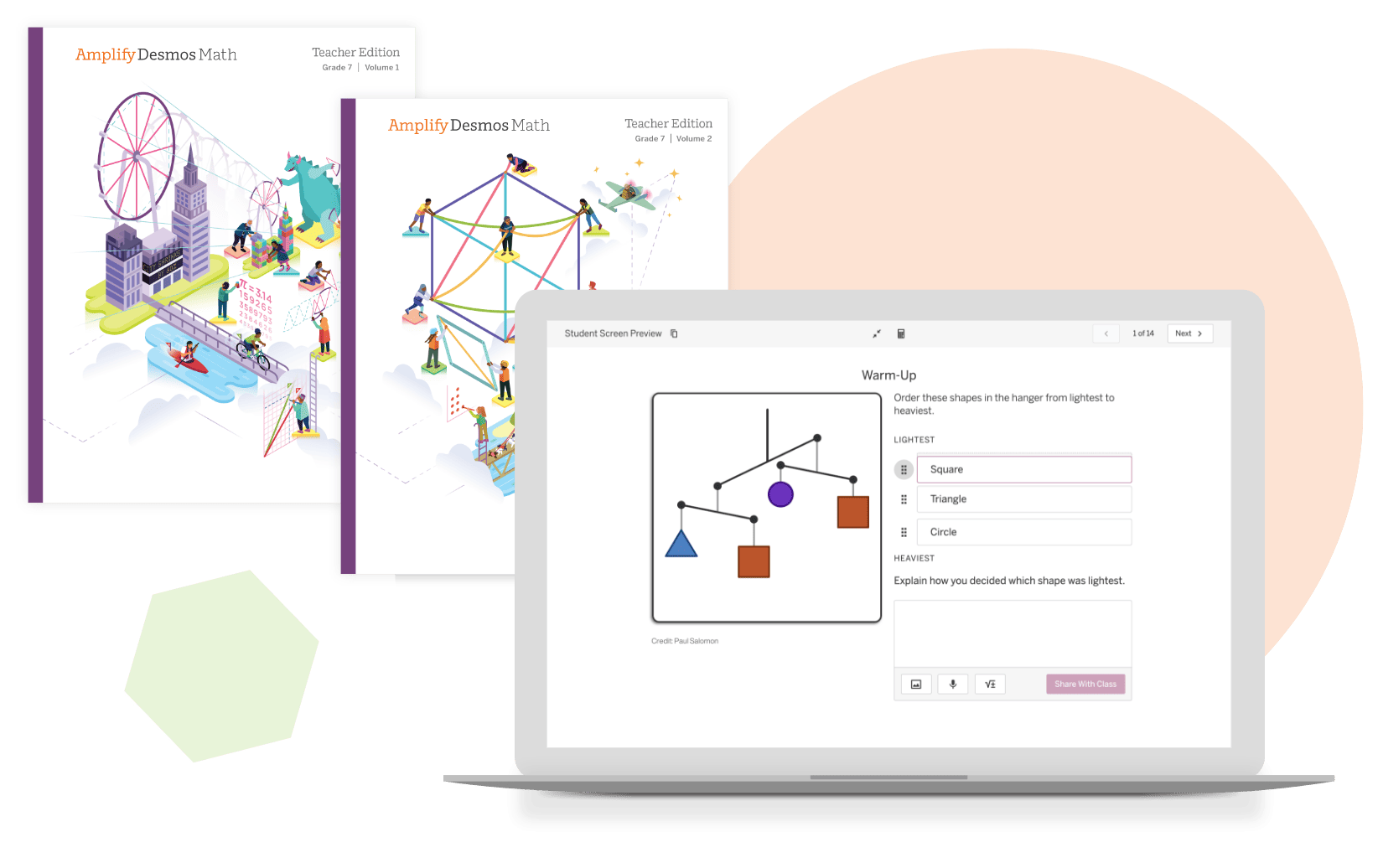
A new core PreK–12 program from Amplify and Desmos Classroom
Amplify Desmos Math makes it easy for both teachers and students to make the shift to a problem-based approach by providing captivating activities, powerful teacher-facilitation tools, and lots of support for differentiation and practice.
We’ve combined interactive problem-based lessons with explicit instruction, reinforcement, and practice to enable students to develop math proficiency that lasts. Lessons set a strong foundation in procedural and fact fluency, deepen understanding of concepts, and enable students to apply learning to real-world tasks.
Amplify Desmos Math will be available for 2025–26 school year implementation. Interested districts can pilot the Beta release starting fall 2024.
Expect more from your math program.
Comprehensive
- Curriculum based on Illustrative Mathematics® IM K–12™
- Differentiation and personalized practice
- Robust assessments and reports
- Student materials in Spanish

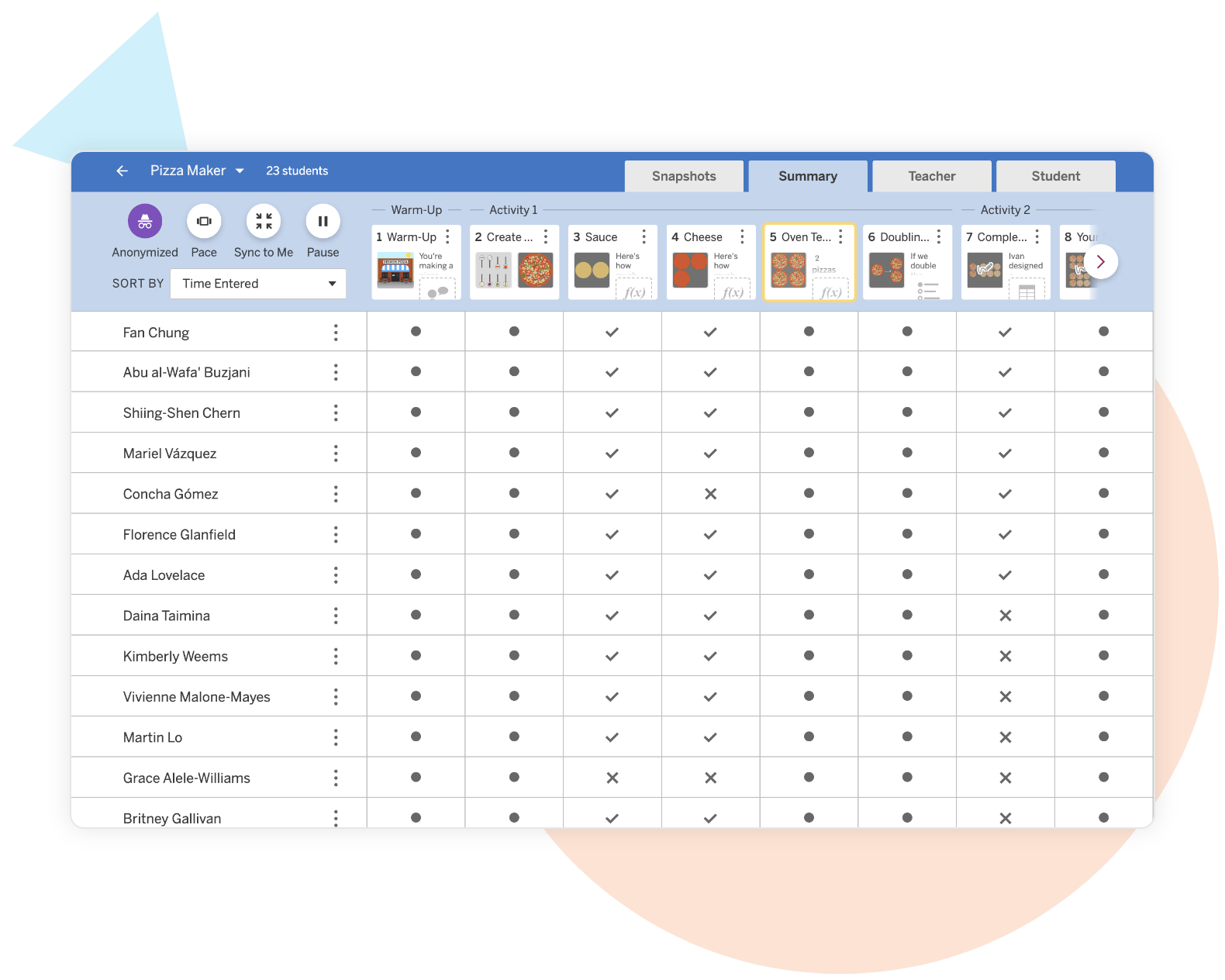
Collaborative
- Powerful teacher-facilitation supports and tools
- Students talking and building from each other’s ideas
- Every lesson has fully compatible print and digital materials for an inclusive classroom
Delightful
- Curiosity-driven lessons that drop students into a real-world problem they want to solve
- Desmos Classroom technology provides instant, interactive feedback to push students’ thinking
- Colorful, visual guidance for teachers and students

What's included
We’ve taken the power of Desmos’ technology and lessons and added beautiful, easy-to-use print and digital components to make a game-changing program that makes teaching a breeze.
-
Student materials
-
Teacher materials
Stay up-to-date on the latest Amplify Desmos Math and Desmos Classroom news.
Digital lessons should be powerful in their ability to surface student thinking and spark interesting and productive discussions. Sign up to learn more about how Amplify Desmos Math and Desmos Classroom bring all students into the math conversation.

